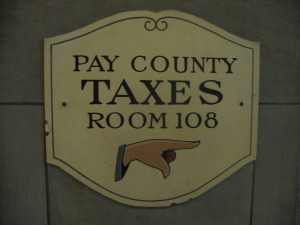 If you are just making the transition from working for someone to working for yourself, you may have some difficulty determining just what you need to charge for your services. There are a lot of ideas that will run through your head. Do you charge a little so you can attract more clients? Do you charge a lot so you can attract better clients? How do I figure out what I am worth? Believe it or not, there is a little bit of a science to know what to charge. Here are some of the concepts that I had to go through when determining where to set my hourly rate.
If you are just making the transition from working for someone to working for yourself, you may have some difficulty determining just what you need to charge for your services. There are a lot of ideas that will run through your head. Do you charge a little so you can attract more clients? Do you charge a lot so you can attract better clients? How do I figure out what I am worth? Believe it or not, there is a little bit of a science to know what to charge. Here are some of the concepts that I had to go through when determining where to set my hourly rate.
Billable Hours vs. Non-Billable Hours
Just like a law firm, accountant, or therapist, you have to figure out what your billable hours are. A project that takes an hour to complete actually costs a lot more than just one hour. Keep these things in mind:
- Prospecting – You had to go out and find the client. Even if this one didn’t take long there certainly are some that took hours of your time.
- Marketing – You are responsible for advertising yourself. That may be in print, on TV, or by attending networking events.
- Administrative Work – You have to correspond with the client a number of times before the project. And then you have to correspond after as well as send and invoice and cash a check.
- Miscellaneous – Running your own office takes time. You have to go on supply runs, clean, organize, and maintain.
All of these items are part of your workload, and you don’t get paid to do them. You only get paid when you are actively working on a client’s project. For every hour you work that is billable, you may put in as much as 2 hours of non-billable.
Pay Your Own Taxes
 When you work for another person or a company, and you are W-2’d, you don’t actually pay all of your taxes. FICA taxes (those are the social security, Medicaid, etc.) come out to 12.4% of your income. As an employee, your employer is responsible for paying 6.2% of them, and you are responsible for the other 6.2%. However, when you are self-employed, you pay the entire amount. This is often called the self employment tax.
When you work for another person or a company, and you are W-2’d, you don’t actually pay all of your taxes. FICA taxes (those are the social security, Medicaid, etc.) come out to 12.4% of your income. As an employee, your employer is responsible for paying 6.2% of them, and you are responsible for the other 6.2%. However, when you are self-employed, you pay the entire amount. This is often called the self employment tax.
In addition to the added burden of self employment taxes, you don’t get to have anything withheld from your paycheck. So if you are making a lot of money, you may be required to file quarterly estimates in order to avoid penalties come next tax season.
No More Benefits
If you worked for someone else, you likely had a retirement plan, health insurance (and other insurances), as well as paid time off and other perks of the job. As your own boss, you get to supply all of these things. Depending on where you worked, these benefits could have added as much as 30% to your salary (in terms of costs you didn’t have to pay for). Now you have to cover all of those things, and they often do not come cheap.
Other Expenses
As your own boss you get to purchase all of your own office supplies. No longer can you go to the cabinet and grab a box of pencils and a ream of paper. Working from home means you have additional utility payments as well. You have to keep the house heated a little warmer in the winter and a little cooler in the summer. All of these things are now coming out of your pocket.
Determining What to Charge
You may think that if you were making $25/hr at your old job you can charge that much for your services now that you work for yourself. That’s a start, but after figuring in all of the above expenses, you will be taking a drastic pay cut. Instead, you have to take what you want to make, and add anywhere from 50%-100% (depending on how many extra expenses your job entails). So if you want to replace your income from your $25 per hour job, you likely need to charge $50 or more for your services ($75 per hour gives you even more flexibility).
The biggest objection, however, is this seems like it will turn clients away because it’s too expensive. If that is the case, you don’t want those clients. They are too picky, and they don’t understand the value of your services. Instead, focus on the ones that are happy to pay what you ask because they know they are getting a great deal.
How do you figure out what you are worth and what to charge? Do you find that you are undercutting your own value?
